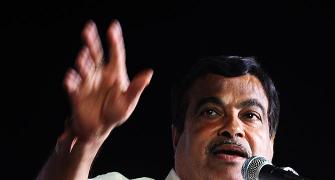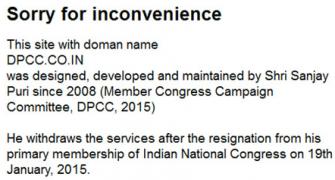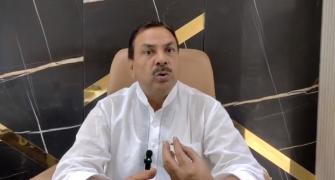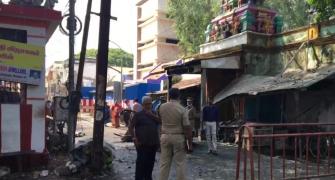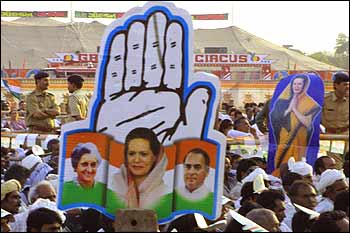
The decision to take to the streets and demonstrate support for former prime minister Manmohan Singh could be a turning point for the Congress, which has been facing a leadership crisis in recent years
On a cold but sunny winter afternoon of December 28, 1997, Sonia Gandhi announced that she would campaign for the Congress party for the Lok Sabha elections.
She was only a 25 paisa member of the party, nothing more, but the announcement changed all equations.
Ensconced in his Purana Quila Road residence in Delhi, then party president Sitaram Kesri -- an elected one, by the way -- could see the writing on the wall as Arjun Singh and Narayan Dutt Tewari along with A K Antony and Sharad Pawar joined hands to persuade him to retire.
He resisted initially but later wilted under pressure. Sonia Gandhi's intervention did not yield any significant electoral increase in the Congress' fortunes. She addressed more than 100 meetings, but the Congress tally was only 143 Lok Sabha seats. But for her and the party, there was no turning back.
The decision -- apparently entirely spontaneous -- to take to the streets and demonstrate support for beleaguered former prime minister Manmohan Singh could be the turning point for a party that is still slumped in shock at repeated electoral defeats.
It was not the younger membership of the Congress that led the march -- it was the old warhorses. It was not the Youth Congress or the National Students Union of India that rallied behind arguably the most incorruptible prime minister India has had.
It was the 60-something Sonia Gandhi and P Chidambaram, and the 70-something A K Antony.
What galvanised Gandhi into action? It might have been a little bird telling her that if something wasn't done, Singh could consider telling the world about the phone calls that used to come from her political aides to clear various things, including coal mine allocations.
It might have been the voice of conscience (aatma ki awaaz) that caused her to wave away the prime ministership and bestow it on Manmohan Singh instead. It might even have been the sense of innate decency that caused her to put her hand to mask her own picture and hold up Manmohan Singh's when the manifesto of the Congress was released ahead of the 2009 elections and she was asked who the prime minister would be if the Congress got the numbers to form a government.
Whatever the motivation, the march must be seen as an important political intervention in the internal affairs of the Congress.
Someone needed to have taken charge and it is the mother who's done it, on an issue on which no Congressman can dare voice any dissent. Paradoxically, whatever complaints Congressmen may have had about two centres of power, Sonia Gandhi is telling them, they can complain all they like, but this will continue (all she needed to have done to indicate the arrangement had ended was to have let Manmohan Singh hung out to dry).
No doubt, books will be written on Sonia's Gandhi's 17-year presidency of the Congress. No Opposition government was dismissed; chief ministers were changed only when it was clear that they might have to go to jail; and coalition management was not as inept as it is generally made out to be.
True, the Congress is still a regency and no amount of internal restructuring will change that. It still operates on the high command principle where the Prime Minister of India can still be contradicted with the simple assertion that “Madam sey baat ho gayi hai”.
But it still needs a degree of clarity to cut through the flattery and subterfuge. And Sonia Gandhi has shown this clarity more than once.
To reach out to Manmohan Singh could not have been such a difficult decision: he made it easy. Singh’s working style has earned him contempt but no enemies. He would never impose his will on the Cabinet, never talk down to senior ministers, never do any backbiting.
He also never lost his temper. In this, he was different from both P V Narasimha Rao (who lost no opportunity to publicly humiliate a colleague, however gently) and Atal Bihari Vajpayee (whose public remonstration of then Gujarat Chief Minister Narendra Modi after the riots in the state, reminding him of raj dharma did not go unnoticed by Modi's rivals in the party).
What remains to be seen is where Sonia Gandhi goes from here. Will she impose Rahul Gandhi on a clearly unenthusiastic party? Or will she be the one to voice a clarion cry once again and hope like hell that the party can sort out its leadership confusion? We will know in April.



